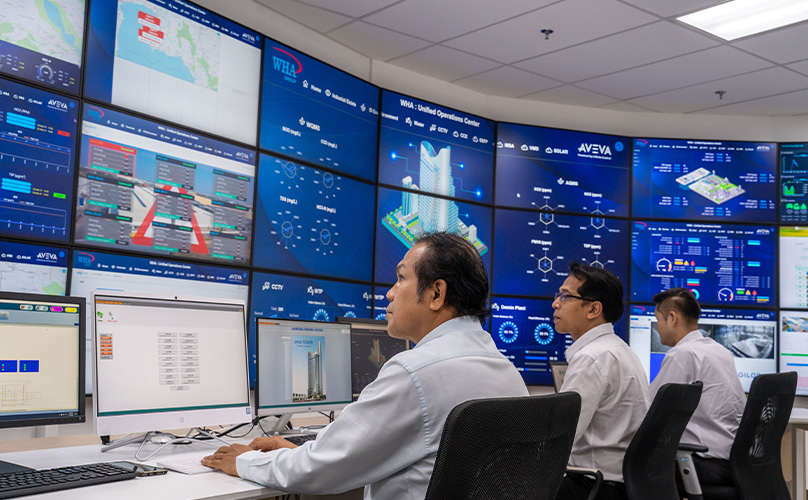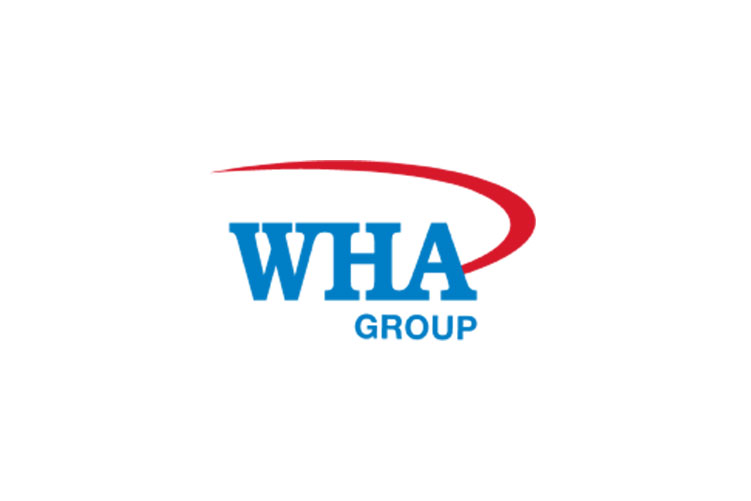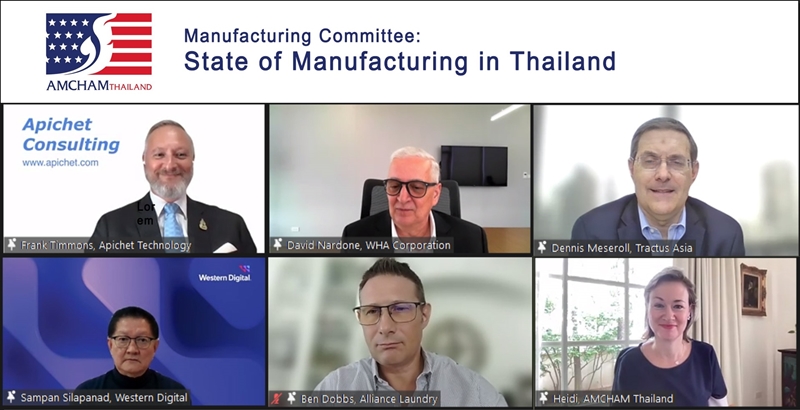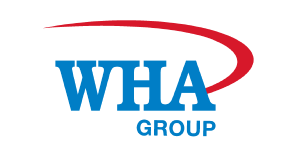Unified Operation Center (UOC)
WHA Group implemented the Unified Operation Center (UOC) which projects real-time monitoring results of all relevant environmental parameters such as air quality, rainfall volume and wastewater quality, and etc. since 2019. In addition, all installed CCTVs throughout Eastern Seaboard Industrial Estate are connected to the UOC which allow all-time monitoring of valuable assets. In addition, the CCTVs installed at wastewater treatment plants' pumping stations are updated with Smart Motion Detector, enhancing security and eliminating the risk of off-standard wastewater.
Additionally, in the event that employees are unable to operate within the operating area, such as in the case of lockdown, operators can still control and give commands (Second Command Center) through this UOC system as well.
Unified Operation Center (UOC)
Nonetheless, in 2021, two additional UOC systems were developed, namely 1) Predictive maintenance system; and 2) Energy Optimization. The Predictive maintenance system has been developed in order to predict the machine operational activities in advance, whether there is a chance of damage or damage to plan maintenance. Thus, this reduces the chance of machine interruption. The Energy Optimization, or use of energy efficiently, from analyzing the data that the system collects and use it to evaluate the energy efficiency plan. As a results, the UOC system covers all 10 subsystems, as follows:
- The UOC covered 14 stations of Water Quality Monitoring Station (WQMS), which demonstrate the effluent quality against the guideline control on parameters: Biochemical Oxygen Demand (BOD), Chemical Oxygen Demand (COD) and Total suspended solid (TSS) before discharging to public water way.
- The Air Quality Monitoring Station (AQMS), consisting of 6 stations, have also been completed in UOC and reported on hourly ambient air quality on parameters Total Suspended Particulate (TSP), Particulate Matter with diameter of 10 micrometers or less (PM-10) Nitrogen dioxide (NO2) and sulfur dioxide (SO2).
- The CCTV has been installed and is monitoring the industrial estate infrastructure, such as road intersection and utilities 24 hours
- The Rainfall Monitoring Station (RMS), in the UOC, monitors the flood prevention management. There are 13 points installed and reported on current rainfall, daily rainfall and monthly accumulate rainfall.
- The Vehicle Management System (VMS) is the smart CCTV that were installed at the main and sub entrance of Industrial estate. It is used for monitoring and tracking license plate, type and number of vehicles in-out boundary which helping for security and traffic management.
- The Water and Wastewater Production is an additional implemented to UOC, which reported on the production and distribution volume as real time basis
- The Chonburi Clean Energy Power Plant (CCE) is a non-hazardous industrial waste to energy (incineration). The CCTV and dashboard of CCE are linked to UOC for monitoring the production and operation of Power Plant.
- The Smart Sensor Fire Pump (SSFP) were installed in 10 warehouses for real time detection on the working of fire protection system to provide better monitoring and response to emergency situations that would lead to damage and unexpected cost. In the case of fire pump running, the system will alarm at dashboard and send SMS via Line application.
- The Logistics and Building Maintenance Smart Application (LBMS), is a platform for building maintenance. It starts from customers requesting fixing to the work completion. The customers can track the status of the fixing and evaluation process. All information and data of LBMS are linked to UOC, including the customer satisfaction score.
- The Solar Rooftops, the electricity production and status of operation, are also linked to UOC.
The UOC can reduce operating costs and workload of employees whose skills could be potentially developed to perform more complex tasks to support sustainable growth of the Group. Moreover, the UOC help provide safety to communities and stakeholders surrounded in industrial estates and reduce pollution, emission, and dust produced by vehicles commuted in day-to-day operation. As a result, WHA Group maintains air quality level that complies with the requirements and standards specified in the Environmental Impact Assessment (EIA) and able to reduce approximately 75 tCO2e of direct GHG (Scope 1) per year.





